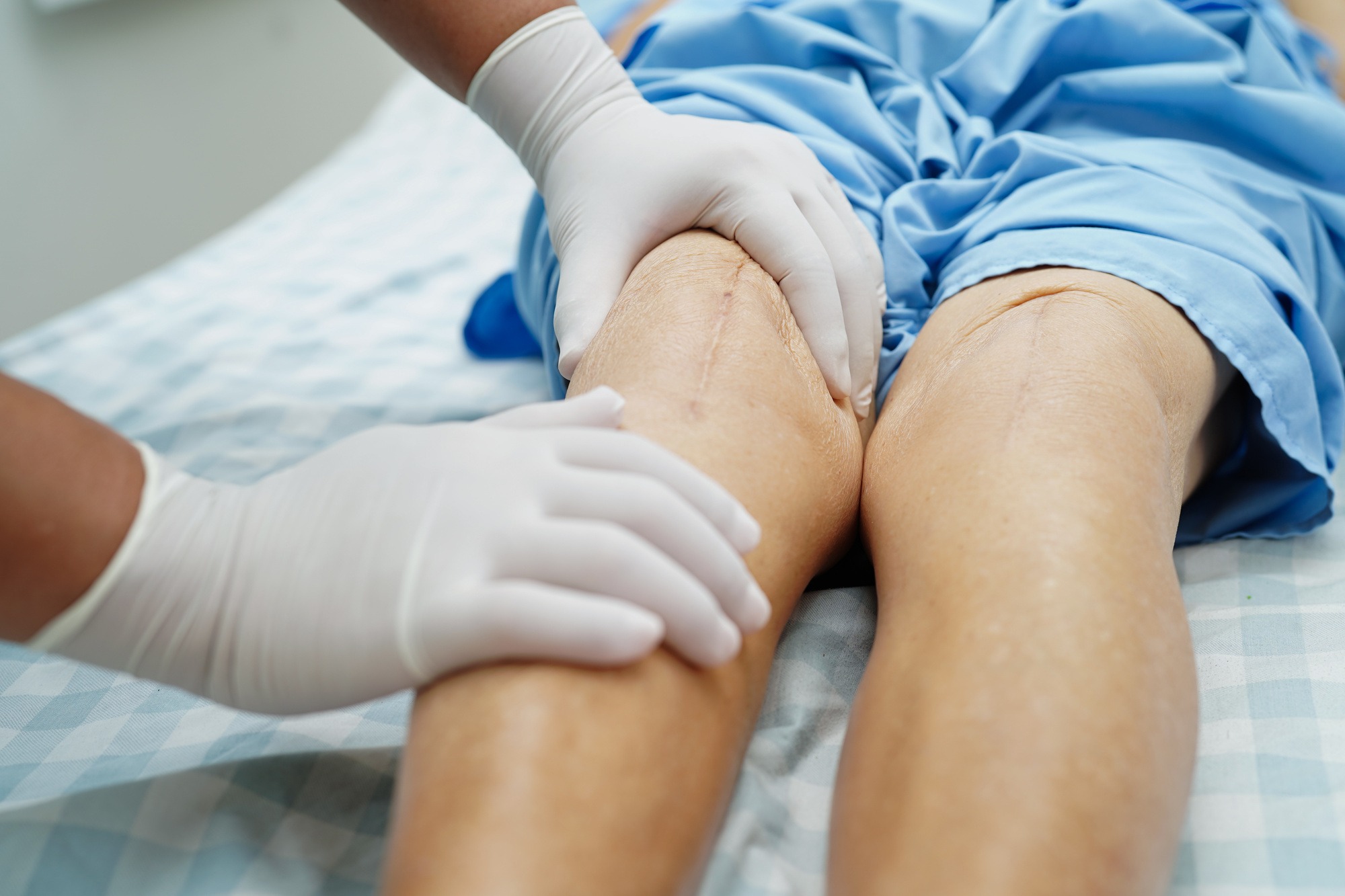Navigating the decision-making process for knee replacement surgery requires careful consideration of various factors, especially for those living with the relentless discomfort and mobility restrictions of chronic knee conditions.
The decision to undergo this procedure is not one to be made lightly. It requires a thorough understanding of the signs that indicate surgery is not just an option but a necessity for restoring mobility and enhancing life quality. That said, this article will delve into the decisive factors that guide individuals towards considering knee replacement surgery.

Types Of Knee Replacement Surgeries
Knee replacement surgeries are pivotal interventions for individuals suffering from severe knee pain and dysfunction, primarily due to arthritis or injury. The surgeries are broadly categorized into these types:
Arthroscopy Keyhole Knee Replacement Surgery
Keyhole knee replacement surgery, also known as minimally invasive knee replacement, represents a significant advancement in orthopedic surgery. This technique is designed to offer patients a less invasive option for knee replacement, with the potential for several benefits over traditional knee replacement methods.
The keyhole technique involves making smaller incisions, typically between 3 to 5 inches, as opposed to the larger incisions required in conventional knee replacement surgery, which can be 8 to 10 inches long. The smaller incisions mean that less tissue is disturbed during the procedure, allowing for potentially quicker recovery times and reduced post-operative pain.
Total Knee Replacement (TKR)
TKR, also known as Total Knee Arthroplasty (TKA), involves replacing all three compartments of the knee joint – the medial (inside), lateral (outside), and patellofemoral (front) compartments. This procedure is typically recommended for patients with advanced arthritis or severe knee damage affecting multiple compartments of the knee.
During the surgery, the surgeon takes out the worn-out surfaces of the femur, tibia, and patella, substituting them with artificial components crafted from metal and plastic. These prosthetic parts are engineered to mimic the natural function of the knee joint.
Partial Knee Replacement (PKR)
PKR, also known as Unicompartmental Knee Arthroplasty (UKA), targets only the single affected compartment of the knee – either the medial, lateral, or patellofemoral compartment. PKR is suitable for patients with limited arthritis confined to one area of the knee.
The surgical approach for PKR is less invasive than that for TKR, often resulting in less tissue damage, shorter hospital stays, and a quicker recovery period. Only the damaged portion of the knee is replaced, allowing for the preservation of healthy bone and tissue, which can lead to a better potential for maintaining natural knee function.
Recognizing The Signs: When To Consider Knee Replacement
The decision to opt for surgery is significant and often comes after other less invasive treatments have been explored. Here are detailed insights into the key signs indicating that knee replacement surgery might be necessary:
- Persistent Pain That Doesn’t Subside With Rest
One of the primary indicators for considering knee replacement is continuous pain in the knee that remains unabated by rest or over-the-counter pain relief medications. This pain is often severe enough to interfere with sleep and daily activities, indicating that the knee joint has suffered significant damage or degradation.
- Chronic Swelling And Inflammation That Doesn’t Improve With Medication
Persistent swelling and inflammation in the knee joint that do not respond to anti-inflammatory medications or rest can signal underlying damage that might require surgical intervention. Chronic inflammation can lead to further joint damage and decrease the knee’s function over time.
- Stiffness And Decreased Mobility
Difficulty in straightening or bending the knee, such as a noticeable decrease in knee mobility, can indicate severe joint damage or arthritis. Stiffness, particularly in the morning or after sitting for extended periods, that limits the ability to perform everyday tasks is a critical sign that knee replacement surgery may be beneficial.
- Difficulty Performing Everyday Activities
When simple activities like walking, climbing stairs, sitting down, and standing up become increasingly difficult or painful, consider knee replacement. This limitation often reflects significant deterioration of the knee joint, impacting the quality of life.
- Failure Of Non-Surgical Treatments
For many, non-surgical treatments such as physical therapy, weight management, anti-inflammatory medications, and corticosteroid injections provide relief from knee pain. However, when these methods no longer alleviate symptoms, it may indicate that the knee condition has progressed to a stage where surgery is the most effective option.

- Severe Knee Deformity
Advanced osteoarthritis or long-standing knee damage can lead to visible deformities in the knee, such as a bow-legged or knock-kneed appearance. These deformities can cause discomfort and affect the alignment of the leg, leading to further complications and indicating the need for surgical correction.
- Radiographic Evidence Of Significant Joint Damage
Imaging tests like X-ray and magnetic resonance imaging (MRI) can reveal the extent of damage in the knee joint. Significant loss of cartilage, bone damage, and other changes visible on these imaging tests can help determine the necessity of knee replacement surgery.
- Impact On Quality Of Life And Mental Health
Chronic knee pain and disability can significantly impact one’s quality of life, leading to depression, anxiety, and social isolation. When the condition affects mental health and daily living, surgery may offer a pathway to a more active and fulfilling life.
Conclusion
Deciding on knee replacement surgery is a profound step towards reclaiming an active and fulfilling life, free from the limitations of knee pain. With the right preparation and support, individuals can make an informed decision that aligns with their health goals and lifestyle aspirations, setting the stage for a successful recovery and a future of improved mobility.
Hey welcome to my blog . I am a modern women who love to share any tips on lifestyle, health, travel. Hope you join me in this journey!

Speak Your Mind